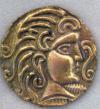Largest Deep Earthquake Ever Recorded Puzzles Seismologists

“It’s a mystery how these earthquakes happen. How can rock slide against rock so fast while squeezed by the pressure from 610 kilometers of overlying rock?” said Thorne Lay, professor of Earth and planetary sciences at the University of California, Santa Cruz.
Lay is coauthor of a paper, published in the September 20 issue of Science, analyzing the seismic waves from the Sea of Okhotsk earthquake. First author Lingling Ye, a graduate student working with Lay at UC Santa Cruz, led the seismic analysis, which revealed that this was the largest deep earthquake ever recorded, with a seismic moment 30 percent larger than that of the next largest, a 1994 earthquake 637 kilometers beneath Bolivia.
Deep earthquakes occur in the transition zone between the upper mantle and lower mantle, from 400 to 700 kilometers below the surface. They result from stress in a deep subducted slab where one plate of the Earth’s crust dives beneath another plate. Such deep earthquakes usually don’t cause enough shaking on the surface to be hazardous, but scientifically they are of great interest.
Credit: diagram by L. Ye and T. Lay, map by Ye et al.,Science
The energy released by the Sea of Okhotsk earthquake produced vibrations recorded by several thousand seismic stations around the world. Ye, Lay, and their coauthors determined that it released three times as much energy as the 1994 Bolivia earthquake, comparable to a 35 megaton TNT explosion. The rupture area and rupture velocity were also much larger. The rupture extended about 180 kilometers, by far the longest rupture for any deep earthquake recorded, Lay said. It involved shear faulting with a fast rupture velocity of about 4 kilometers per second (about 9,000 miles per hour), more like a conventional earthquake near the surface than other deep earthquakes. The fault slipped as much as 10 meters, with average slip of about 2 meters.
“It looks very similar to a shallow event, whereas the Bolivia earthquake ruptured very slowly and appears to have involved a different type of faulting, with deformation rather than rapid breaking and slippage of the rock,” Lay said.
The researchers attributed the dramatic differences between these two deep earthquakes to differences in the age and temperature of the subducted slab. The subducted Pacific plate beneath the Sea of Okhotsk (located between the Kamchatka Peninsula and the Russian mainland) is a lot colder than the subducted slab where the 1994 Bolivia earthquake occurred.
“In the Bolivia event, the warmer slab resulted in a more ductile process with more deformation of the rock,” Lay said.
The Sea of Okhotsk earthquake may have involved re-rupture of a fault in the plate produced when the oceanic plate bent down into the Kuril-Kamchatka subduction zone as it began to sink. But the precise mechanism for initiating shear fracture under huge confining pressure remains unclear. The presence of fluid can lubricate the fault, but all of the fluids should have been squeezed out of the slab before it reached that depth.
“If the fault slips just a little, the friction could melt the rock and that could provide the fluid, so you would get a runaway thermal effect. But you still have to get it to start sliding,” Lay said. “Some transformation of mineral forms might give the initial kick, but we can’t directly detect that. We can only say that it looks a lot like a shallow event.”
In addition to Ye and Lay, the coauthors of the paper include Hiroo Kanamori of the California Institute of Technology and Keith Koper of the University of Utah. This work was supported in part by the National Science Foundation (grant #EAR-1245717).
Anyone can join.
Anyone can contribute.
Anyone can become informed about their world.
"United We Stand" Click Here To Create Your Personal Citizen Journalist Account Today, Be Sure To Invite Your Friends.
Before It’s News® is a community of individuals who report on what’s going on around them, from all around the world. Anyone can join. Anyone can contribute. Anyone can become informed about their world. "United We Stand" Click Here To Create Your Personal Citizen Journalist Account Today, Be Sure To Invite Your Friends.
LION'S MANE PRODUCT
Try Our Lion’s Mane WHOLE MIND Nootropic Blend 60 Capsules
Mushrooms are having a moment. One fabulous fungus in particular, lion’s mane, may help improve memory, depression and anxiety symptoms. They are also an excellent source of nutrients that show promise as a therapy for dementia, and other neurodegenerative diseases. If you’re living with anxiety or depression, you may be curious about all the therapy options out there — including the natural ones.Our Lion’s Mane WHOLE MIND Nootropic Blend has been formulated to utilize the potency of Lion’s mane but also include the benefits of four other Highly Beneficial Mushrooms. Synergistically, they work together to Build your health through improving cognitive function and immunity regardless of your age. Our Nootropic not only improves your Cognitive Function and Activates your Immune System, but it benefits growth of Essential Gut Flora, further enhancing your Vitality.
Our Formula includes: Lion’s Mane Mushrooms which Increase Brain Power through nerve growth, lessen anxiety, reduce depression, and improve concentration. Its an excellent adaptogen, promotes sleep and improves immunity. Shiitake Mushrooms which Fight cancer cells and infectious disease, boost the immune system, promotes brain function, and serves as a source of B vitamins. Maitake Mushrooms which regulate blood sugar levels of diabetics, reduce hypertension and boosts the immune system. Reishi Mushrooms which Fight inflammation, liver disease, fatigue, tumor growth and cancer. They Improve skin disorders and soothes digestive problems, stomach ulcers and leaky gut syndrome. Chaga Mushrooms which have anti-aging effects, boost immune function, improve stamina and athletic performance, even act as a natural aphrodisiac, fighting diabetes and improving liver function. Try Our Lion’s Mane WHOLE MIND Nootropic Blend 60 Capsules Today. Be 100% Satisfied or Receive a Full Money Back Guarantee. Order Yours Today by Following This Link.








It can happen because they tampered with our sciences and have lied to such an extent, that their whole premise is based on a house of cards. They are left clueless when their charts and graphs don’t work out the way their tampered education led them to believe they should work out. And yet, to explain this, they will inevitably go back to that same tampered education to try and re-calculate and explain where they went wrong.
Could it be this is proof that the earth really is hollow. Besides nobody has seen or touched, with a tool ,the lower mantle -or even the upper mantle -for that is all theory.
How can it happen at that pressure rock probably takes on the properties of ice under pressure instead of water being a lubricant.Magma.
The truth is: The less weight on the poles from ice melting causes the Earth to move faster and more freely than recorded history has reported, We are in for a big surprize.
Ok, now I’ve heard it all, wow.
BigEllsin, are you a political climate scientist, or what? Are you a political shill?
Less ice at the poles causes the Earth to move faster and more freely? WTF?
You’re a fricking idiot! ROTFLMAO!
Sorry RMS, you simply do not understand Science. If I throw a frozen pizza at you, it will obtain a much higher velocity than a molten pizza. It’s as simple as that and everybody knows it. Therefore, the Earth has to be accelerating on the north pole where the ice was thin (until now) and slowing on the south pole where the ice has been thickening. Think of it as a cosmic spitball.
For further assistance in the scientific method, let us consult Monty Python:
Sir Bedevere: There are ways of telling whether she is a witch.
Peasant 1: Are there? Oh well, tell us.
Sir Bedevere: Tell me. What do you do with witches?
Peasant 1: Burn them.
Sir Bedevere: And what do you burn, apart from witches?
Peasant 1: More witches.
Peasant 2: Wood.
Sir Bedevere: Good. Now, why do witches burn?
Peasant 3: …because they’re made of… wood?
Sir Bedevere: Good. So how do you tell whether she is made of wood?
Peasant 1: Build a bridge out of her.
Sir Bedevere: But can you not also build bridges out of stone?
Peasant 1: Oh yeah.
Sir Bedevere: Does wood sink in water?
Peasant 1: No, no, it floats!… It floats! Throw her into the pond!
Sir Bedevere: No, no. What else floats in water?
Peasant 1: Bread.
Peasant 2: Apples.
Peasant 3: Very small rocks.
Peasant 1: Cider.
Peasant 2: Gravy.
Peasant 3: Cherries.
Peasant 1: Mud.
Peasant 2: Churches.
Peasant 3: Lead! Lead!
King Arthur: A Duck.
Sir Bedevere: …Exactly. So, logically…
Peasant 1: If she weighed the same as a duck… she’s made of wood.
Sir Bedevere: And therefore…
Peasant 2: …A witch!